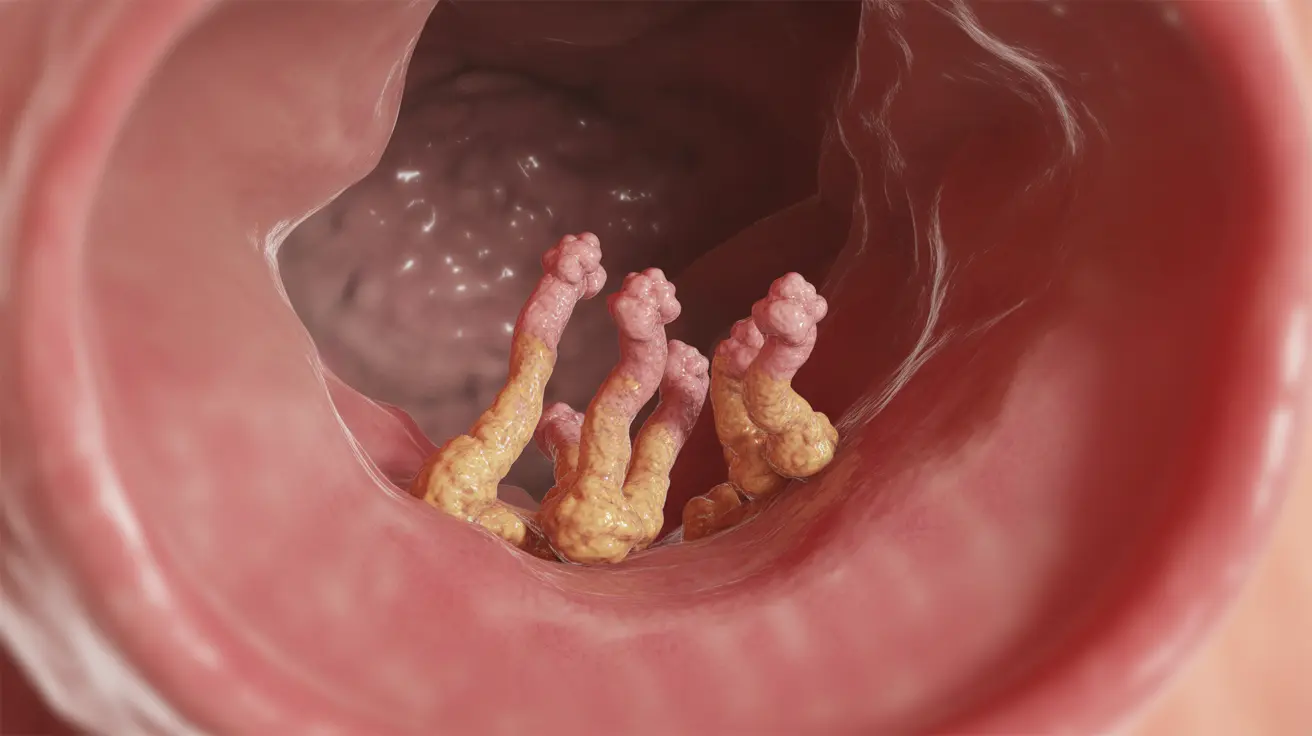Benign squamous mucosa esophageal papillomas are small, non-cancerous growths that develop in the lining of the esophagus. These growths, while generally harmless, can cause concern for patients who discover them during routine medical examinations. Understanding their nature, causes, and treatment options is essential for anyone diagnosed with this condition.
These papillomas specifically affect the squamous mucosa, which is the specialized tissue lining the esophagus. While they're relatively uncommon, being aware of their characteristics and implications can help patients make informed decisions about their healthcare.
What Are Benign Squamous Mucosa Esophageal Papillomas?
Benign squamous mucosa esophageal papillomas are finger-like projections that grow from the inner lining of the esophagus. These growths typically measure less than 5 millimeters in size and can occur either as single lesions or in multiple locations throughout the esophagus.
The term "benign" is crucial here, as it indicates that these growths are not cancerous and generally don't pose serious health risks. They develop from the squamous cells that make up the protective inner lining of the esophagus.
Common Symptoms and Signs
Many people with esophageal papillomas experience no symptoms at all. However, when symptoms do occur, they may include:
- Difficulty swallowing (dysphagia)
- Mild chest discomfort
- Sensation of something stuck in the throat
- Occasional heartburn
- Regurgitation
Causes and Risk Factors
The development of benign squamous mucosa esophageal papillomas can be attributed to several factors:
Viral Factors
Human Papillomavirus (HPV) infection has been identified as one potential cause, though not all cases are HPV-related. The virus can affect the esophageal tissue, leading to papilloma formation.
Mechanical Irritation
Chronic irritation of the esophageal lining, often from gastroesophageal reflux disease (GERD) or other inflammatory conditions, may contribute to papilloma development.
Diagnosis and Detection
Diagnosis typically occurs through several methods:
- Upper endoscopy (primary diagnostic tool)
- Tissue biopsy for confirmatory testing
- Histological examination
- Advanced imaging techniques when necessary
Treatment Approaches
Treatment options for benign squamous mucosa esophageal papillomas vary depending on symptoms and size:
Conservative Management
For asymptomatic cases, doctors may recommend monitoring the condition without immediate intervention, especially if the papillomas are small and not causing problems.
Endoscopic Removal
When treatment is necessary, endoscopic removal is the most common approach. This can include:
- Endoscopic mucosal resection
- Radiofrequency ablation
- Laser therapy
Frequently Asked Questions
What are the common symptoms of benign squamous mucosa esophageal papillomas?
While many cases are asymptomatic, common symptoms can include difficulty swallowing, mild chest discomfort, and a feeling of something stuck in the throat. Some patients may also experience occasional heartburn or regurgitation.
What causes benign esophageal squamous papillomas and how is HPV involved?
These papillomas can be caused by HPV infection, chronic irritation from GERD, or mechanical trauma to the esophagus. HPV is believed to play a role in some cases by infecting the squamous cells of the esophageal lining, leading to papilloma formation.
How are benign esophageal squamous papillomas diagnosed during endoscopy?
During endoscopy, these papillomas appear as small, white or pink, finger-like projections from the esophageal wall. Doctors typically perform a biopsy during the endoscopy to confirm the diagnosis and rule out other conditions.
What treatment options are available for benign esophageal squamous papillomas?
Treatment options include endoscopic removal through various techniques such as mucosal resection, radiofrequency ablation, or laser therapy. Some cases may only require monitoring if they're asymptomatic.
Is there a risk that benign squamous mucosa esophageal papillomas can become cancerous?
While these papillomas are typically benign, regular monitoring is recommended. The risk of malignant transformation is very low, but patients should maintain regular follow-up appointments with their healthcare providers for ongoing assessment.




